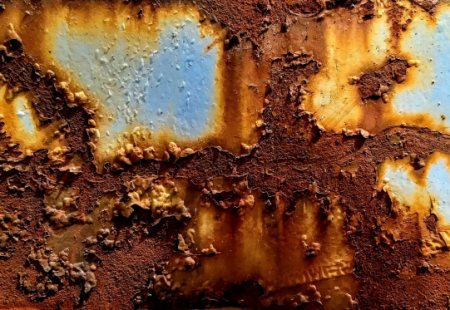- Home
- About
- Training Courses
- ASME Courses
- API Courses
- API 510 Pressure Vessel
- API 570 Process Pipework
- API 653 Aboveground Storage Tank
- API 936 Refractory Personnel
- API 580 RBI Online
- API 580 RBI Classroom *New*
- API 571 Corrosion & Materials Online
- API 571 Corrosion & Materials Classroom *New*
- API 577 Welding Inspection & Metallurgy Online
- API 510 CPD Training
- API 570 CPD Training
- API 1169 Pipeline Construction
- API SIFE Source Inspector Fixed Equipment
- API SIRE Source Inspector Rotating Equipment
- E-Learning
- Technical Courses
- API CPD Recertification
- Training Courses
- Technical Hub
- Virtual Training
- FAQs
- Contact
- Online Training Portal
- Shop

- In: Training | On: Jul 30, 2020
Ways to Eliminate Rogue Materials
27-31 July is API SIFE (Source Inspector Fixed Equipment) week at WILKINSON COUTTS.
Today, we will be studying the Principles of Eliminating Rogue Materials to prevent failures.
Source Inspection Principles for eliminating Rogue Materials
API (SIFE) sets out clear source inspection principles for reducing the risk of buying materials that aren’t fit for their purpose.
Action is required in when you specify materials that require any of the following properties:
• Low temperature impact resistance
• Erosive wear resistance
• High-temperature creep resistance
• Weldability (of alloys where it can be difficult)
These are responsible for perhaps 90% of the failures attributed to ‘rogue’ or ‘substandard’ material.
Rogue Materials cause Failure
As material choice is a central issue in engineering design, rogue materials can cause failures in many different ways.
This is an increasing problem, rather than decreasing.
Many material ‘quality problems’ that were almost eliminated up to the 1980s due to improvements in QA/QC and management systems.
They have now reappeared on a larger and more widespread scale than before, since manufacture has spread around the world.
The number of related failures has increased proportionately as a result.

Rogue Materials; What are they?
This is the general name given to engineering materials that are non-compliant with their chosen specification.
This is not the same as choosing the wrong specification for a particular application (although this can cause similar problems).
It can be an issue with all materials but is particularly common in plain carbon and low alloy steels used for pressure vessels and structures.
How do Rogue Materials occur?
Due to their sensitivity to alloying elements or heat treatment, some steels are naturally much more variable in quality than others.
When these are made by factories using old technology, poor QA, little regard for the customer, or a combination three, the end result is a material with higher than normal variability and lots of out-of-specification batches.
These activities thrive on material specifications that are fairly loose, with allowed exemptions from various mechanical tests.
The mindset of some see little wrong with allowing non-complying batches to slip through their own inspection activity.
Non-compliance checking is ignored and is replaced by activities based on convenience or cheapness.
Internal non-conformance reports are considered an embarrassment rather than a success.
The purchaser will then receive the rogue material, accompanied by nice certificates telling them what they want to hear.
How to Rogue Materials cause failure?
There are four types of Failure Modes that cause the most failures:
Brittle Fracture
The material is too brittle owing to any combination of too-high Carbon equivalent value, impurities in the grain structure or inadequate heat treatment.
The result is lowered Charpy impact strength at its minimum design metal temperature (MDMT) and a tendency to fail catastrophically in a brittle manner.
This is made worse by any welding or imposed fatigue stresses on the component.
Embrittlement Cracking
The material is too hard (for the same reasons as above) leading to decreased resistance to environmental cracking (SCC, H2 embrittlement and similar).
There may also be non-compliances in chemical composition, making the situation worse.
High temperature Creep
Material designed to operate within its creep range (starting at about 380 degC for plain Carbon steels) can easily be produced with out-of-specification chemical composition or heat treatment (annealing).
This makes it susceptible to accelerated micro-cracking and/or softening in service causing premature failure.
It is most common in steels containing greater than 5% Cr with supporting trace elements.
Erosion
The material is too soft, causing it to erode when exposed to aggressive process fluids velocities, particulates or cavitation.
It is caused by either incorrect chemical composition and/or inadequate ‘finishing’ of the component (e.g. a surface treatment such as nitriding).
All of these damage mechanisms and their reasons have been known about for years.
They are all easily stopped by simply ordering the correct specification of material and checking that what you get is compliant with both the specified chemical analysis and mechanical properties.
Note that the chemical analysis alone, (such as measured with a Positive Material Identification (PMI) machine) can be misleading.
It’s possible that a material with the correct chemical analysis can still have inadequate impact strength, hardness or resistance to embrittlement cracking.
This is because there are so many other variables involved.

How to stop rogue materials getting into your plant and causing failures
This is a relatively simple process
Follow these four guidelines and that should stop most of your problems with failures caused by rogue materials:
• Don’t believe that manufacturers’ material certificates are all true
Some were prepared by people who will tell you anything you want to hear.
• Do additional mechanical tests (impact, hardness and tensile strength as a minimum) on material you buy before you use it
This is even for if the material specification or application code doesn’t require them.
Cut the test pieces and witness the test results yourself.
That way you will know what you are getting.
• Be especially careful with site repairs
This is where rogue materials often get in by the back door.
Weld consumables need checking also.
• Avoid buying cheap materials in the first place
Anything that is cheap is cheap for a reason.
If you work for a large company, beware of your own purchasing department.
They may like the sound of the cheapest prices, even if they pretend they don’t.
Their logic may be “steel is steel”, not knowing the very big difference between the alloys.
Should you believe all material certificates?
There is no need to debate whether a material test report (MTR) is ‘true’ or not.
Simple tensile, impact and hardness tests on the material the MTR purports to represent will give you confidence (or not).
Many API codes (510/570/SIFE/598) discuss this.
It’s fair to say that most purchasers don’t do their own ‘goods inward’ mechanical testing.
PMI tests give an elemental analysis but is only part of the story.
What about Material Traceability?
Most MTRs (the typical EN10204 3.1 grade) are validated by the material manufacturer themselves.
The way that materials is sold, revalidated by stockholders and then cut into work-size pieces means that traceability is often less than 100%.
Even high integrity nuclear or components can suffer traceability inadequacies.
Questions about the API (SIFE) Certificate?
If you have any questions about the Wilkinson Coutts API (SIFE) Inspector Cert training (residential or on-line), contact Paul Wilkinson or Craig Coutts:


